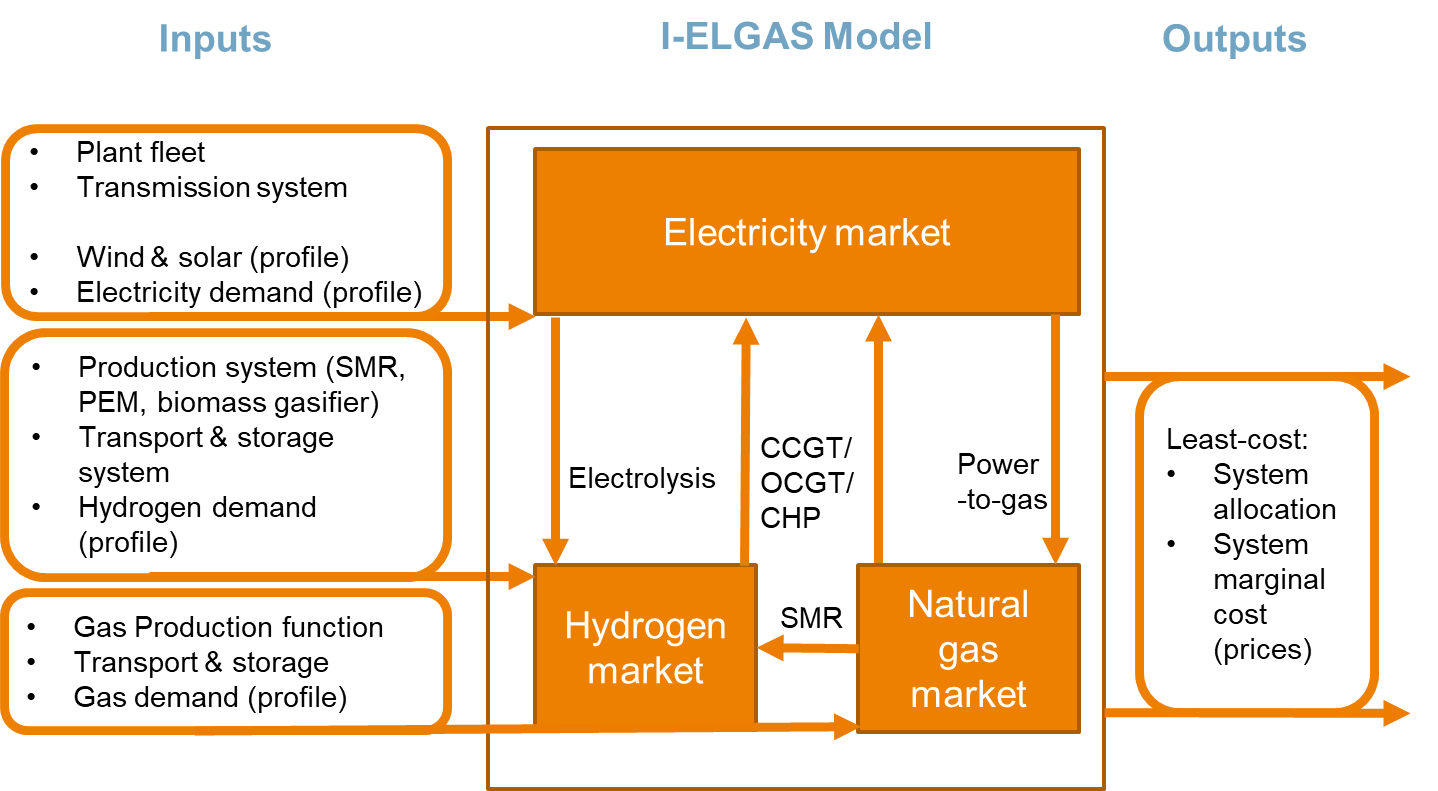
Integrated Electricity, Hydrogen and Gas Markets Model (I-ELGAS)
The future energy system will be increasingly integrated in order to absorb large fluctuations in intermittent renewables. Electricity, gas and hydrogen markets are interlinked via technologies such as water-electrolysis plants, natural gas reformers as well as natural gas and hydrogen-fired power plants. Analysis of the future interactions between energy supply and demand requires a market-based system allocation model which accounts for interactions between these markets and simultaneously represents the infrastructures in these markets. As the interactions between these markets will only increase in the future, an integrated assessment of these markets and systems is necessary.
At TNO Energy Transition, AIMMS is used to model the integrated electricity, hydrogen and gas markets (I-ELGAS). The model analyzes future energy system while considering interactions and linkages between these markets.

I-ELGAS is an integrated energy system optimization model with an objective to minimize total operating costs of the integrated system, while serving demand for power and hydrogen and considering generation/production and transmission/transport/storage constraints. The output of the model includes, hourly least-cost system allocation as well as marginal costs of conversion and energy balances of each system for the whole year. Currently, the model covers nine North Sea Countries (Norway, Sweden, Denmark, the Netherlands, Germany, England, Ireland, Belgium and France). A detailed model of the Netherlands (with 33 electricity nodes and 19 hydrogen nodes, equivalent to Tennet/Gassunie Infrastructure outlook 2050 ) is also available.
Power system representation: The electricity system representation includes generation plants aggregated per technology type, cross-border transmission capacities, energy storage including batteries, electric vehicles and pumped hydro. Electricity demand profiles are input to the model whereas electricity demand for electrolysis is generated endogenously.
Hydrogen system representation: The hydrogen system representation includes grey (gas reforming) and green hydrogen (electrolysis and biomass gasification) production, hydrogen storage and transport modules as well as conversion of hydrogen into power. The hydrogen demand for residential, industry and transport sector is input to the model whereas the hydrogen demand for power generation is determined endogenously.
Natural gas system representation: The natural gas system representation includes gas production, liquid and pipeline transport capacities as well as storage capacities. The gas demand profiles for residential, industry and transport sector is input to the model whereas gas demand for power generation as well as hydrogen production is determined endogenously in the model.
